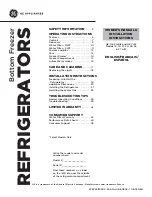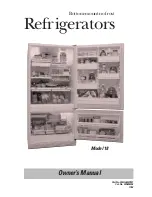
t
15
Fresh food refrigeration
The refrigerator compartment is suitable for cooling
drinks and for normal food storing.
To obtain the best performance, do not store warm
food or evaporating liquids in the refrigerator and do
cover or wrap up the food, particularly if it has a strong
smell.
Movable shelves
The walls of the refrigerator are equipped with a series
of runners so that the shelves can be positioned as
desired.
For better use of space, the front half-shelves can lie
over the rear ones.
D338
Positioning the door shelves
To permit storage of food packages of various sizes,
the central door shelf can be adjusted in height.
To make these adjustments proceed as follows:
Gradually pull the shelf in the direction of the arrows
until it comes free, then reposition as required.
For more thorough cleaning, the top and bottom door
sheves can be removed by pulling them in the
direction of the arrows, then refitting them in position.
HINTS
Hints for refrigeration
To help you use your refrigerator correctly, here are
some useful hints:
Cooked food, cold cuts, jelly, etc.: these should be
well covered and can be stored on any of the glass
shelves.
Fruit & vegetables: these should be thoroughly
cleaned and placed in the bottom drawer.
Butter & cheese: these should be placed in special
airtight containers or wrapped in aluminium foil or
polythene bags to keep out as much air as possible.
Milk bottles: these should have a top and should be
stored in the bottle rack on the door.
Raw meat (beef, pork, lamb & poultry): wrap in
polythene bags and place on top of the salad
compartment, this being the coldest spot in the
refrigerator.
Meat can only be stored safely in this way for one
or two days at the most.
Bananas, potatoes, onions and garlic, if not
packed, must not be kept in the refrigerator.
































